Will the birds attack the skyscraper and other issues of the air hostel. Part 2
They were afraid of birds in Petersburg only two times. The first time - all when the bird flu roved. The second time - skyscrapers at the start of Lakhta construction. Will the birds “attack” the skyscraper, as some authors, claiming to be a world sensation, sometimes write? How to build relationships with the original inhabitants of the airspace?
To understand everything, they invited birdwatchers to the construction site. How the main birds work - read in the first part . Now let's look at the answer to question number 2.
Will the birds collide with a skyscraper?
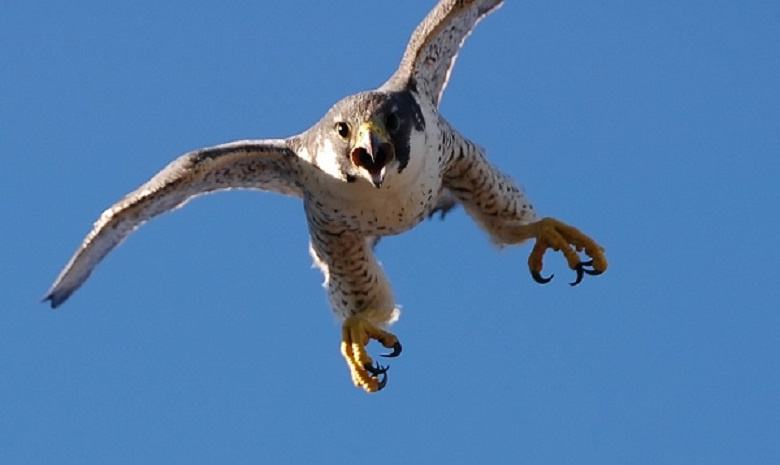
A photo
Bird vision is different from human. Their eyes are perfect. Acute vision is a matter of survival of birds, so evolution took care of this.
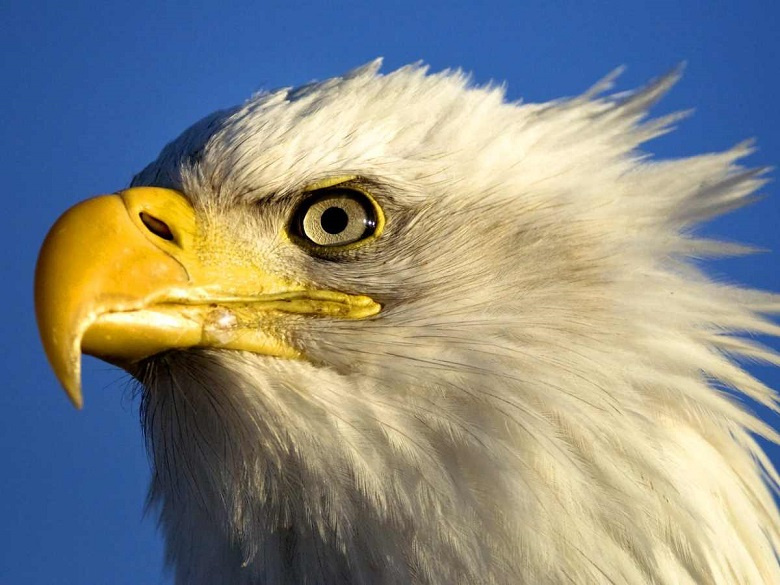
The eyes of birds are larger than human ones relative to body size, their lens changes shape faster and stronger. Many species in the organs of vision there are special devices that facilitate survival in flight conditions.
For example, “binocular vision” allows them to appreciate distance well. Those who fly with a lack of light, have enhanced twilight vision - in the retina there are more “rods”, though less than “cones”.
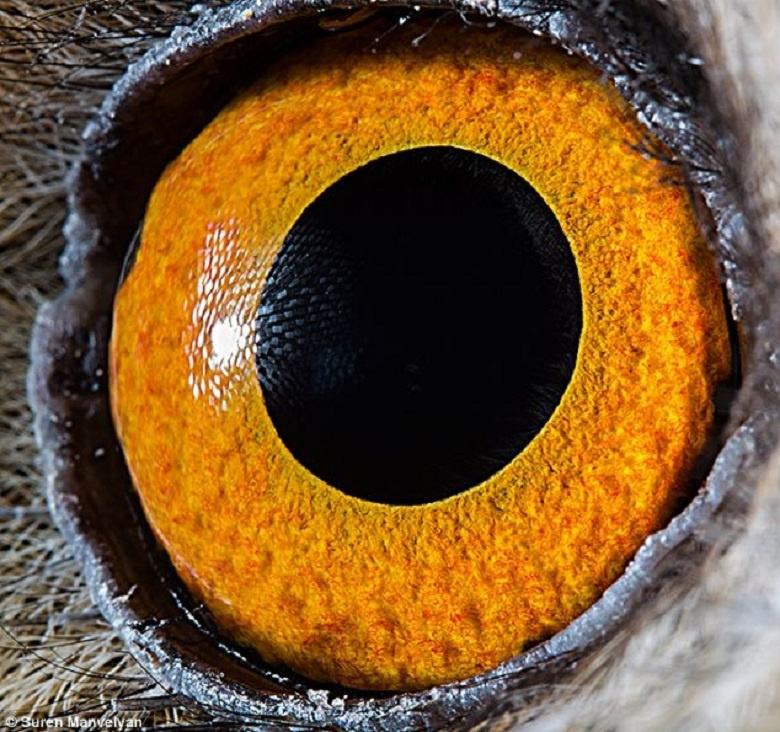
Eye of an eared owl. More sticks - less cones. Photo of Suren Manvelyan from here
In seabirds, such as gulls, improved vision in fog. In general, it is believed that birds see 4-5 times better than man!
So do birds see a skyscraper? If you see him, be sure that they see him even better.

Tower from a height, as they say "bird's eye." In fact, this is not true - the main stream of birds goes up to 100 m. In any case, they can see the tower well.
Nevertheless, it is still early to put a blissful point.
The problem of glass really exists. Moreover, it is in third place among anthropogenic factors in the number of bird deaths. On the first - vehicles. On the second - the death of the paws of domestic animals - cats and dogs. Even if your furry friend has been hunting only Whiskas all his life.

Once he gets a little comfortable in the yard, he will be a mortal danger to birds. Watch for pets.
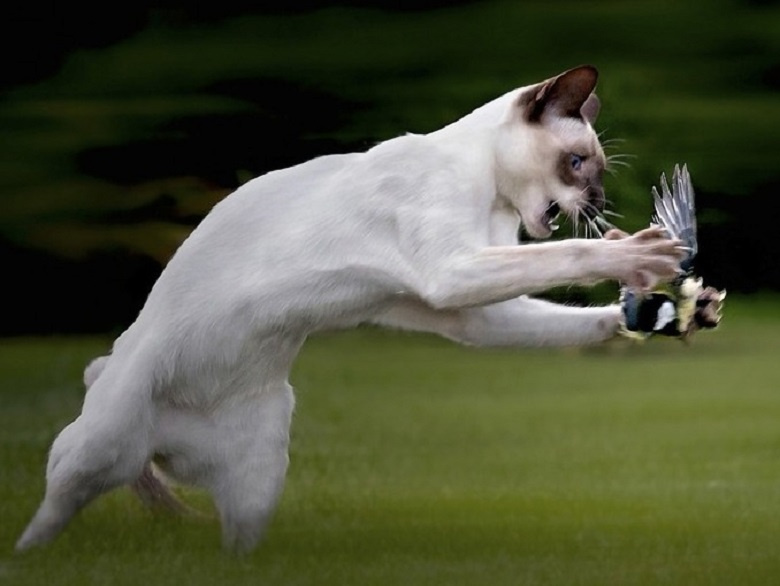
But back to the glass. What's wrong with him? It looks like air. The worst case is a suite of windows - it seems to birds that this is a walkthrough.
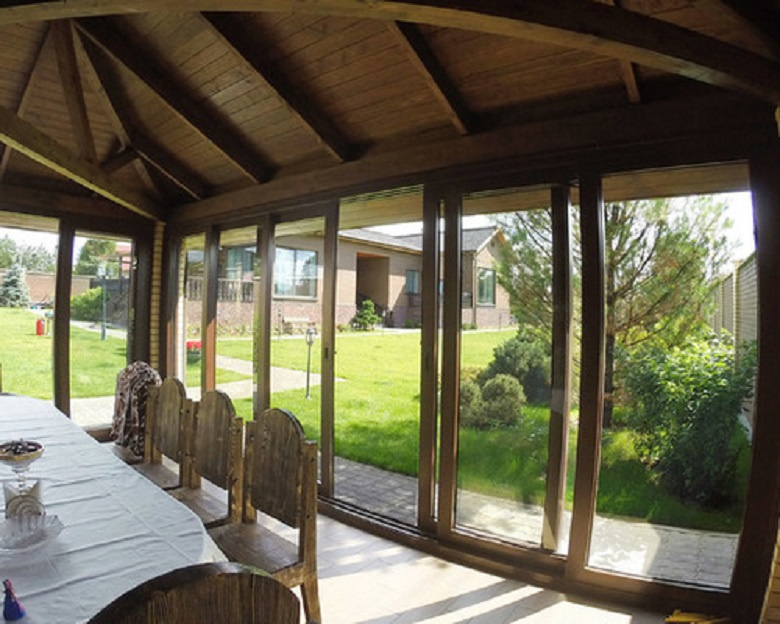
In such cases, the bird can see the possibility of through passage. A photo
The second of the most dangerous options - the continuous glass walls of the houses - birds can lose their orientation if they fly into such glass jungles.
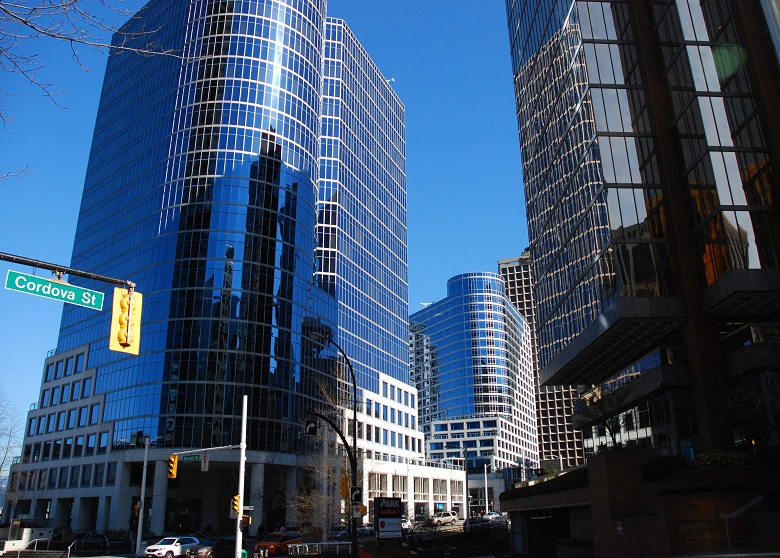
Glass jungle. Vancouver. Photo from here
From this point of view, a dotted skyscraper with well-defined contours is not dangerous - the birds understand that there is something wrong and it is better to fly around the building.
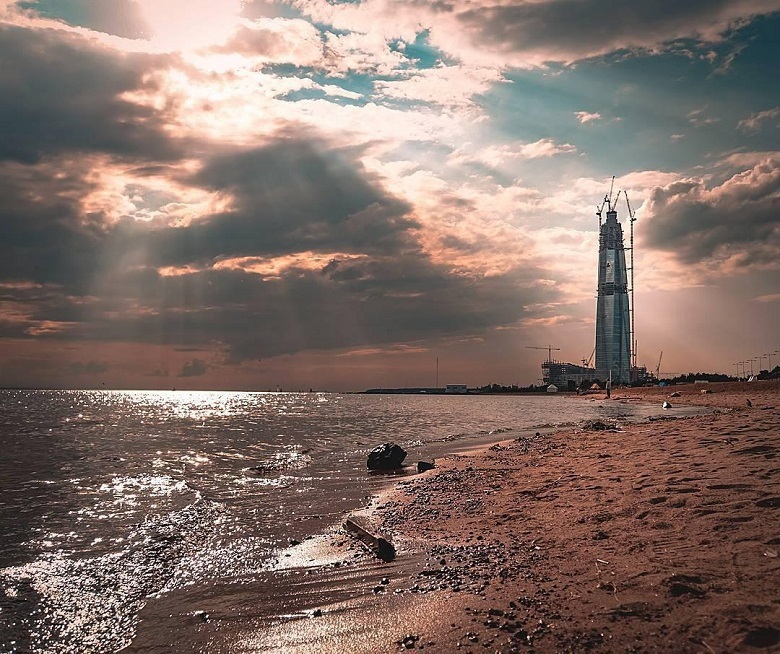
Photo by Oleg Popov
Observation data confirms this - despite the fact that the facade is more than half ready, no bird collisions with the building are registered.
And what about the stories about birds crashing into skyscrapers? For example, in May, the Internet spread the news of a case involving the death of 400 winged fighters in Galveston, Texas.
Regarding such cases - and this is an emergency, and not a common practice, ornithologists have different versions. Priority - light trap.
The light trap operates in conditions not just bad, but nightmarish visibility. Bad weather raged in Galveston on May 16 - rain poured, strong wind blew, then night descended on the city ... A good dispatcher will not drive the plane out in such weather. But the birds have flights to cancel, alas, no one. The brightly lit point skyscraper is apparently the only thing that was clearly visible in those conditions and the birds moved towards it as a shelter. The result is sad.

Three Galveston bird survivors. A photo
Stories about the light trap - not one thousand years.
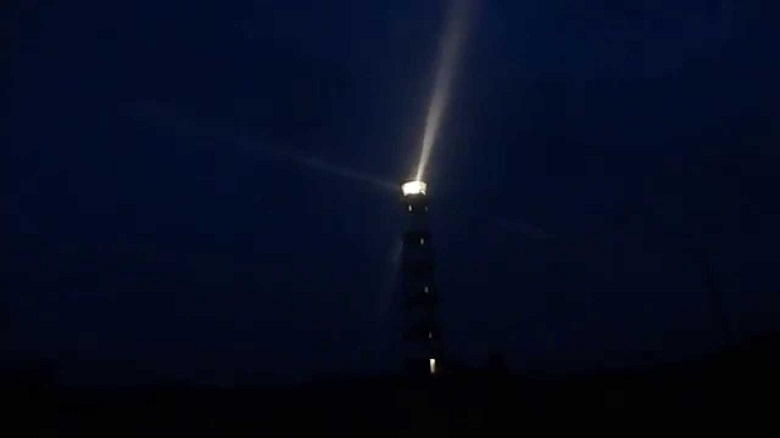
Screen. A source
The problem of lighthouses has long existed - not only seafarers hurried up to them, but also birds, only the latter often broke up. In the same way, only with a happy ending are meetings of birds and ferries in the sea. Birds often fly around brightly lit steam when flying through large bodies of water, although this time the light trap really turns out to be a refuge.
Ornithologists advise owners of skyscrapers to muffle the light, and it’s better that they do without illumination during the migrations and, especially, in bad weather. In Canada, scientists suggest dimly highlighting a building in green. It sounds like a strange thing - as the most natural - green - can scare away birds? But the birds well distinguish between natural green and artificial green light. Apparently, just because they have seen a lot of real green and understand the correct and the wrong shades. In any case, these are the conclusions of scientists.
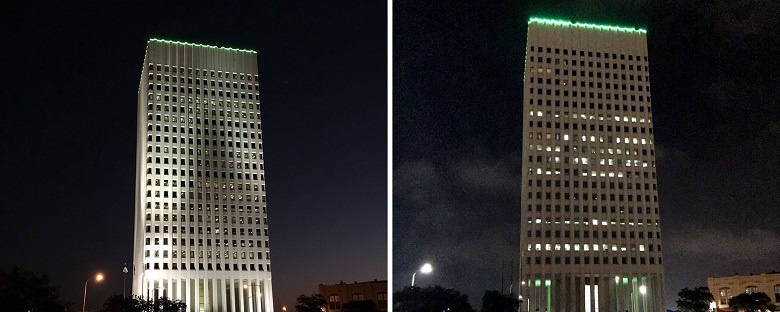
The same skyscraper One Moody Plaza from Galveston - after the incident, the lights were turned off during the migration of birds. Stock Foto Pop Mechanics from here
In addition to the light trap, a number of cases can be explained by other versions. For example, a magnetic anomaly.
Why do birds return home? The raptor, who remained to nest in the Lakhta region, flew thousands of kilometers not somewhere abstract "to Petersburg." He flew to a specific place, exactly where he had a nest.
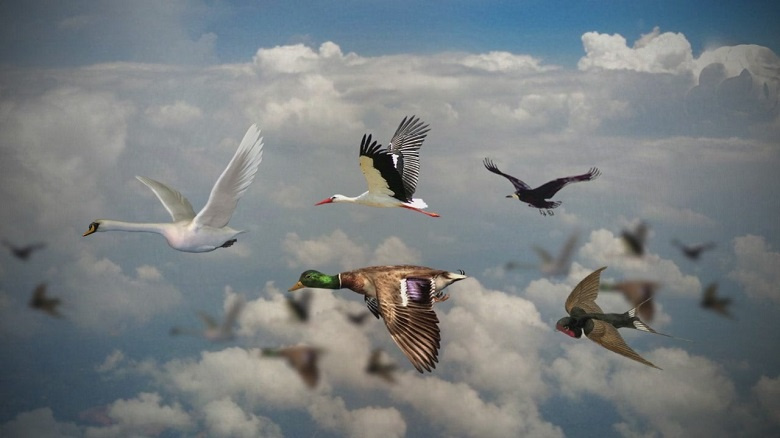
Each bird flies exactly to his home. Screen. A source
The first thing that birds do when they become independent is to be separated from their parents. It is an instinct that protects from intra-family ties (and genetic weakening of the offspring) and an instinct that dictates expansion into a new territory — the same one that drove people from Africa to resettlement on all habitable islands and continents. Young birds make a nest in a new place, since then they return there. This is a house, in the literal sense.
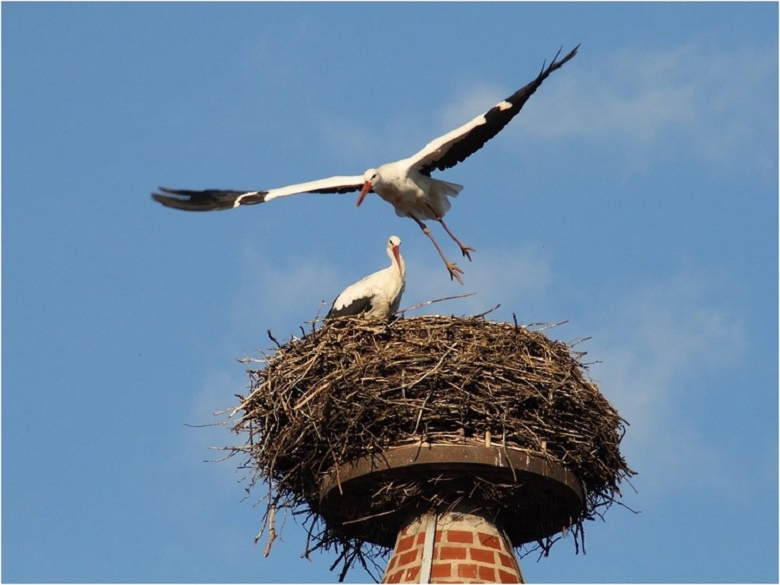
Next year, these storks will arrive here.
And now the question. How do birds know where to fly to return? Maybe they somehow remembered the road? Scientists conducted experiments - specifically rejected the birds from the course. Young people unmistakably returned to the direction, and experienced birds generally flew like a navigator - to a specific place.
There are no exact explanations for this fact yet. Someone thinks that birds remember the road - they fly by the stars or along the guides, which are the river beds, mountain ranges, etc.

Perhaps the birds also know how to distinguish constellations and navigate them
But there is a version that evolution gave the birds a more reliable way - they can somehow navigate the earth’s magnetic field. It is almost like a built-in compass.
This version also explains a number of inexplicable deaths of birds, when they massively crash against buildings or cater to cars - magnetic anomalies (so-called magnetic storms) can be the cause.
But back to Lakhta. While problems with bird migrants are not observed. Birds fly about their business, skirting the site. Builders are building a building. Ornithologists continue to observe. Designers to develop a special lighting for the period of migrations - dim, only to identify the contours of the tower, without attracting birds. And Lakhta Center has a new symbol - a bird.
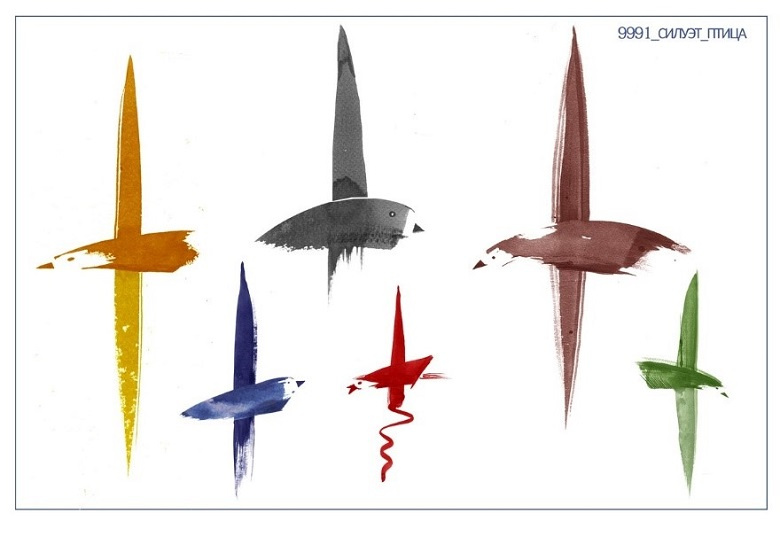
Sketch author - Daria Kuznetsova
-
Thank you for your help in presenting materials from specialists of the Faculty of Biology of St. Petersburg State University.
To understand everything, they invited birdwatchers to the construction site. How the main birds work - read in the first part . Now let's look at the answer to question number 2.
Will the birds collide with a skyscraper?

A photo
How do birds see
Bird vision is different from human. Their eyes are perfect. Acute vision is a matter of survival of birds, so evolution took care of this.

The eyes of birds are larger than human ones relative to body size, their lens changes shape faster and stronger. Many species in the organs of vision there are special devices that facilitate survival in flight conditions.
For example, “binocular vision” allows them to appreciate distance well. Those who fly with a lack of light, have enhanced twilight vision - in the retina there are more “rods”, though less than “cones”.

Eye of an eared owl. More sticks - less cones. Photo of Suren Manvelyan from here
In seabirds, such as gulls, improved vision in fog. In general, it is believed that birds see 4-5 times better than man!
So do birds see a skyscraper? If you see him, be sure that they see him even better.
Tower from a height, as they say "bird's eye." In fact, this is not true - the main stream of birds goes up to 100 m. In any case, they can see the tower well.
Nevertheless, it is still early to put a blissful point.
Glass problem
The problem of glass really exists. Moreover, it is in third place among anthropogenic factors in the number of bird deaths. On the first - vehicles. On the second - the death of the paws of domestic animals - cats and dogs. Even if your furry friend has been hunting only Whiskas all his life.

Once he gets a little comfortable in the yard, he will be a mortal danger to birds. Watch for pets.

But back to the glass. What's wrong with him? It looks like air. The worst case is a suite of windows - it seems to birds that this is a walkthrough.

In such cases, the bird can see the possibility of through passage. A photo
The second of the most dangerous options - the continuous glass walls of the houses - birds can lose their orientation if they fly into such glass jungles.

Glass jungle. Vancouver. Photo from here
From this point of view, a dotted skyscraper with well-defined contours is not dangerous - the birds understand that there is something wrong and it is better to fly around the building.

Photo by Oleg Popov
Observation data confirms this - despite the fact that the facade is more than half ready, no bird collisions with the building are registered.
“... The construction of the building to an altitude of about 300 meters at the present time has not changed the situation with birds flying by. Inclined glazing also does not affect the birds ... ”From the technical report on operational ornithological monitoring of Lakhta Center for April-June 2017.
And what about the stories about birds crashing into skyscrapers? For example, in May, the Internet spread the news of a case involving the death of 400 winged fighters in Galveston, Texas.
Light trap
Regarding such cases - and this is an emergency, and not a common practice, ornithologists have different versions. Priority - light trap.
The light trap operates in conditions not just bad, but nightmarish visibility. Bad weather raged in Galveston on May 16 - rain poured, strong wind blew, then night descended on the city ... A good dispatcher will not drive the plane out in such weather. But the birds have flights to cancel, alas, no one. The brightly lit point skyscraper is apparently the only thing that was clearly visible in those conditions and the birds moved towards it as a shelter. The result is sad.

Three Galveston bird survivors. A photo
Stories about the light trap - not one thousand years.

Screen. A source
The problem of lighthouses has long existed - not only seafarers hurried up to them, but also birds, only the latter often broke up. In the same way, only with a happy ending are meetings of birds and ferries in the sea. Birds often fly around brightly lit steam when flying through large bodies of water, although this time the light trap really turns out to be a refuge.
What to do with this problem?
Ornithologists advise owners of skyscrapers to muffle the light, and it’s better that they do without illumination during the migrations and, especially, in bad weather. In Canada, scientists suggest dimly highlighting a building in green. It sounds like a strange thing - as the most natural - green - can scare away birds? But the birds well distinguish between natural green and artificial green light. Apparently, just because they have seen a lot of real green and understand the correct and the wrong shades. In any case, these are the conclusions of scientists.

The same skyscraper One Moody Plaza from Galveston - after the incident, the lights were turned off during the migration of birds. Stock Foto Pop Mechanics from here
Alternative Versions
In addition to the light trap, a number of cases can be explained by other versions. For example, a magnetic anomaly.
Why do birds return home? The raptor, who remained to nest in the Lakhta region, flew thousands of kilometers not somewhere abstract "to Petersburg." He flew to a specific place, exactly where he had a nest.

Each bird flies exactly to his home. Screen. A source
The first thing that birds do when they become independent is to be separated from their parents. It is an instinct that protects from intra-family ties (and genetic weakening of the offspring) and an instinct that dictates expansion into a new territory — the same one that drove people from Africa to resettlement on all habitable islands and continents. Young birds make a nest in a new place, since then they return there. This is a house, in the literal sense.

Next year, these storks will arrive here.
And now the question. How do birds know where to fly to return? Maybe they somehow remembered the road? Scientists conducted experiments - specifically rejected the birds from the course. Young people unmistakably returned to the direction, and experienced birds generally flew like a navigator - to a specific place.
There are no exact explanations for this fact yet. Someone thinks that birds remember the road - they fly by the stars or along the guides, which are the river beds, mountain ranges, etc.

Perhaps the birds also know how to distinguish constellations and navigate them
But there is a version that evolution gave the birds a more reliable way - they can somehow navigate the earth’s magnetic field. It is almost like a built-in compass.
This version also explains a number of inexplicable deaths of birds, when they massively crash against buildings or cater to cars - magnetic anomalies (so-called magnetic storms) can be the cause.
Finally
But back to Lakhta. While problems with bird migrants are not observed. Birds fly about their business, skirting the site. Builders are building a building. Ornithologists continue to observe. Designers to develop a special lighting for the period of migrations - dim, only to identify the contours of the tower, without attracting birds. And Lakhta Center has a new symbol - a bird.

Sketch author - Daria Kuznetsova
-
Thank you for your help in presenting materials from specialists of the Faculty of Biology of St. Petersburg State University.
All Articles